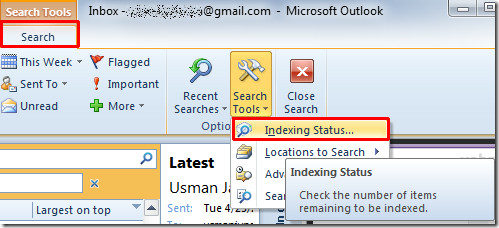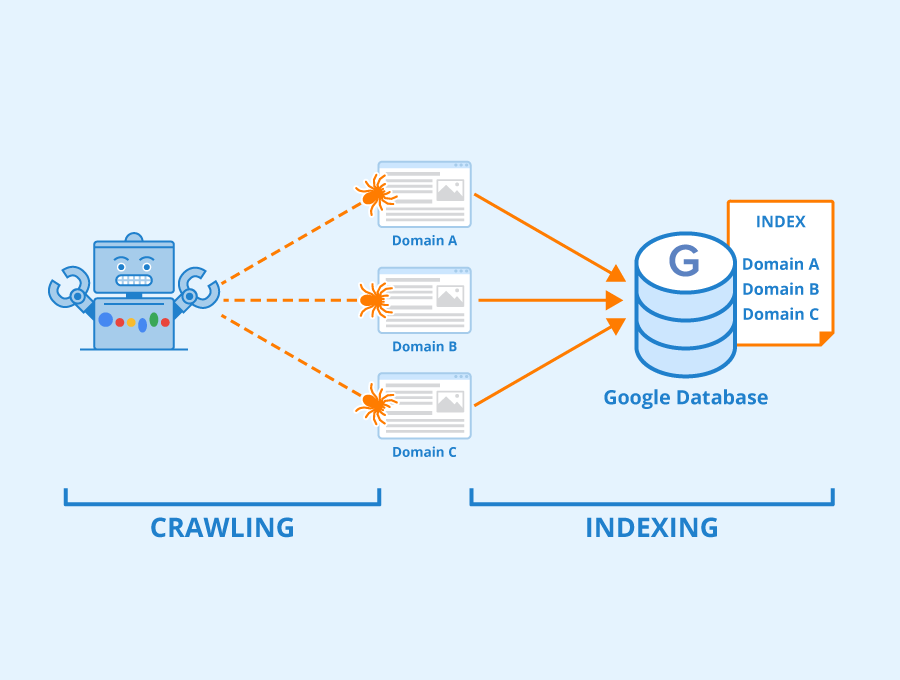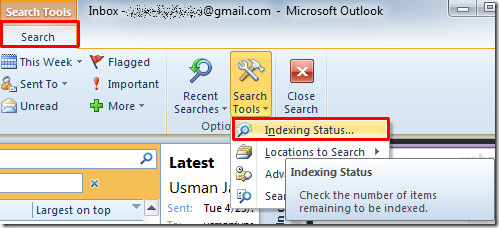In the dynamic world of digital marketing and search engine optimization, keeping track of your website’s indexing status is paramount to maintaining visibility and enhancing performance. Indexing status monitoring tools allow webmasters and SEO professionals to ensure that search engines like Google are crawling and indexing their web pages correctly. These tools not only provide insights into visibility but also help identify any indexing issues that can affect ranking and traffic. This article explores the best tools available for monitoring indexing status, equipping you with the knowledge to effectively manage your website’s presence on the web.
Top Tools for Effective Indexing Status Monitoring
Understanding the Importance of Indexing
Monitoring indexing status is crucial for ensuring that your website appears in search engine results. If your pages aren’t indexed, they won’t be visible to online users, severely impacting traffic. Indexing is needed for SEO effectiveness and online visibility, serving as the foundation for all subsequent search optimization efforts.
Google Search Console: A Comprehensive Overview
Google Search Console is a widely-used free tool that helps webmasters understand how Google interacts with their site. It provides insights into index coverage, highlighting which pages are indexed, which are not, and any indexing issues through detailed reports. Notably, the Index Coverage report is instrumental in troubleshooting indexing problems and confirming that new content is being indexed properly.
Bing Webmaster Tools: An Alternative Perspective
Bing Webmaster Tools is often underutilized but offers valuable insights similar to Google’s, especially for websites targeting audiences who use Bing. This tool offers an Index Explorer that provides data on the number of URLs Bing has indexed, allowing webmasters to drill down into specific indexing issues. Additionally, it features an SEO Analyzer that could potentially highlight issues impacting indexing.
Screaming Frog SEO Spider: A Detailed Crawl Solution
Screaming Frog SEO Spider is a desktop-based tool ideal for crawling websites much like a search engine does. It helps identify indexing issues by reporting on factors such as redirects, broken links, or duplicate content. This tool can determine if pages are being crawled correctly and are available for indexing, serving as a preemptive measure against potential indexing problems.
SEMrush: Monitoring and Analyzing with Precision
SEMrush offers comprehensive site audits that can reveal insights about a website’s indexing health. Its reports highlight crawlability issues, monitor index status changes over time, and suggest SEO improvements. Using their Site Audit feature, SEMrush can discern indexing patterns, providing alerts on any changes in indexing status which helps maintain an optimal level of performance.
| Tool | Key Feature | Use Case |
|---|---|---|
| Google Search Console | Index Coverage Reports | Diagnosing indexing issues directly from Google |
| Bing Webmaster Tools | Index Explorer | Analyzing site indexing through Bing’s index |
| Screaming Frog SEO Spider | Website Crawling | Identifying crawl-related indexing problems |
| SEMrush | Site Audit | Comprehensive indexing and SEO health reports |
How to check the indexing status?

Understanding Indexing in Search Engines
Before diving into the process, it’s crucial to grasp what indexing means in the context of search engines. Indexing is the process by which search engines organize information before a search to enable super-fast responses to queries. When your website is indexed, it becomes possible for it to appear in search results.
- Crawling: Search engines send out spiders or bots to explore and review the content on your website.
- Indexing: After crawling, the content is analyzed for relevance and categorized for storage in the search engine’s databases.
- Serving: When a user queries, the search engine retrieves results from the indexed content and displays it based on algorithms.
Using Google Search Console to Check Indexing Status
Google Search Console is one of the most effective tools to check the indexing status of your website. It’s both detailed and user-friendly, providing a comprehensive overview of your site’s visibility.
- Create and verify a Google Search Console account if you haven’t already.
- Navigate to the Coverage Report section, where you can see details about indexed and non-indexed pages.
- Use the URL Inspection Tool by entering your page’s URL to check its indexing status specifically and understand any issues preventing indexing.
Alternative Methods to Verify Indexing Status
If you prefer not to use Google Search Console, there are alternate methods to confirm your website’s indexing status. Although these methods may not be as detailed, they provide a quick way to check visibility in search engines.
- Use Google’s search bar: Type site:yourdomain.com to see what pages of your website are indexed.
- Employ third-party tools like Ahrefs or SEMrush, which give insights into indexing and overall SEO performance.
- Check URL presence in Google by searching the exact URL in Google’s search bar to see if it appears in results.
What is an indexing tool in digital marketing?

An indexing tool in digital marketing is a software or online service that helps businesses and marketers manage and improve their website’s presence in search engines like Google, Bing, and others. These tools are critical for search engine optimization (SEO) practices, as they help ensure that a website is properly indexed by search engines, which enhances its visibility in search results. By using indexing tools, businesses can track, analyze, and optimize their website content for better search performance.
How Indexing Tools Improve SEO
Indexing tools are essential in enhancing a website’s SEO performance. Here’s how:
- Crawling Analysis: These tools help in understanding how search engines crawl through a website, identifying pages that are indexed and those that are not, thus allowing for improvements where necessary.
- Keyword Optimization: Indexing tools often offer insights into keyword usage and positioning, enabling marketers to refine their content to better match search engine queries.
- Error Identifications: They can detect errors such as broken links, duplicate content, or pages that are not being indexed due to issues, allowing for quick resolutions that can improve SEO scores.
Main Features of Digital Marketing Indexing Tools
Indexing tools come with various features that aid in digital marketing strategies; some of these include:
- Comprehensive Reports: These tools generate detailed reports on a website’s index status, providing valuable insights for SEO improvements.
- Competitive Analysis: Some tools can compare a website’s indexing performance against competitors, identifying opportunities for gaining a competitive edge.
- Integration Capabilities: Many indexing tools integrate with other digital marketing platforms and analytics tools, allowing for a seamless data-driven marketing approach.
Benefits of Using Indexing Tools in Digital Marketing
Leveraging indexing tools offers several advantages, such as:
- Increased Visibility: Properly indexed websites are more likely to appear in relevant search queries, increasing organic traffic.
- Improved Performance Tracking: Regular monitoring and analysis help in maintaining and improving search engine rankings over time.
- Efficient Troubleshooting: Quick identification of indexing or crawling issues ensures that pages are readily accessible to search engines, preventing potential ranking downgrades.
Frequently Asked Questions
What are the best tools to monitor indexing status for a website?
Several tools excel in monitoring the indexing status of a website, each with its own unique set of features. Google Search Console is a top choice for many, offering insights into how Google indexes your site and alerts about any issues. Bing Webmaster Tools provides similar functionalities for monitoring indexing on Bing. For a more comprehensive solution, Ahrefs and SEMrush offer advanced tools that not only track indexing but also give detailed SEO analyses. Additionally, Screaming Frog SEO Spider is highly effective in crawling your site and reporting on indexing issues while being a robust software for keeping track of URLs and their indexing statuses.
Why is it important to monitor the indexing status of a website?
Monitoring the indexing status of your website is crucial as it directly affects your site’s visibility in search engine results. If your pages are not properly indexed, they cannot appear in search results, which essentially means potential visitors are unable to find your site through search engines. Consistent monitoring ensures that any technical issues hindering indexing are promptly identified and resolved. Additionally, understanding the indexing status helps in optimizing SEO strategies and enhancing overall site performance, potentially increasing traffic and improving search engine rankings.
How can I fix indexing issues once they are identified?
Once indexing issues are identified using monitoring tools, several steps can be taken to resolve them. Start by ensuring that the pages you want indexed are not accidentally blocked by robots.txt files or meta tags. Make sure that your site has a sitemap submitted to search engines, which helps them understand the structure and important pages of your website. Additionally, check for duplicate content issues or ensure that important pages use canonical tags to guide search engines. Regular audits and updates to your website’s content and structure can also help in maintaining optimal indexing status.
Can indexing tools help with understanding search performance?
Yes, indexing tools can indeed assist in understanding your website’s search performance. By providing detailed reports on which of your pages are indexed, these tools let you see which pages are performing well in search results and which are not. Tools like Google Search Console offer insights into click-through rates (CTR), keyword performance, and the overall visibility of your content. By analyzing this data, you can identify trends and patterns in your site’s performance, make data-driven decisions to improve SEO strategies, and better align content creation efforts with your audience’s search behaviors.

